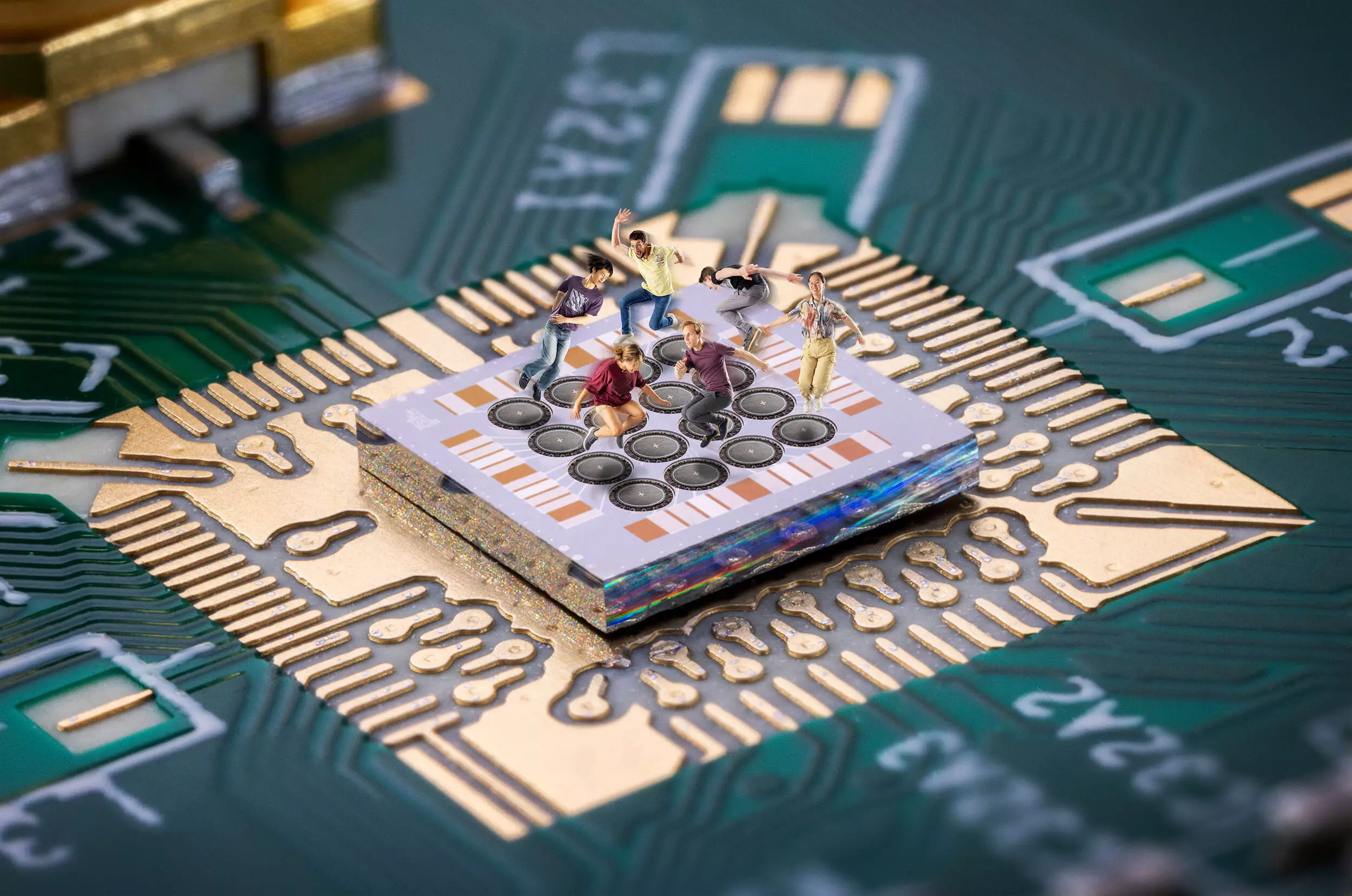The landscape of quantum computing is rapidly evolving, driven by groundbreaking research that seeks to unlock the full potential of qubits. A recent study by a research team at QuTech, a collaboration between TU Delft and TNO, has made significant strides in the realm of quantum logic through the development of somersaulting spin qubits. This advancement may drastically enhance the efficiency of controlling extensive arrays of semiconductor qubits, showcasing a remarkable intersection of theoretical physics and experimental ingenuity.
The 1998 seminal work by Loss and DiVincenzo laid the foundations for how qubits could leverage quantum dots, introducing the concept of hopping spins for qubit logic. However, it has taken over two decades for experimental methods to catch up with this theoretical framework, demonstrating that real-world applications of these ideas are finally becoming feasible. The QuTech team’s recent publications in *Nature Communications* and *Science* not only endorse the decades-old vision but also pave the way for exciting future possibilities in quantum computing technology.
The Mechanism Behind Somersaulting Spins
Traditional approaches to qubit manipulation often relied on elaborate microwave signals and large magnetic fields, which complicated the control electronics for quantum processors. QuTech’s innovative work shifts this paradigm by demonstrating that universal control can be achieved with simpler baseband signals and minimal magnetic fields. This breakthrough significantly reduces the barriers to operationalizing quantum technology, which could facilitate its mainstream adoption.
The crux of the operation lies in the hopping of spins from one quantum dot to another, likened to people jumping between trampolines in a park. In this playful analogy, each trampoline represents a quantum dot, and the initial concept of quantum logic involved dedicated trampolines for each “jumper.” Nevertheless, the essence of QuTech’s findings indicates that as spins transfer from dot to dot, they undergo a unique form of control, akin to executing somersaults mid-air, whereby they experience physical torque leading to rotation. This mechanic is not just a quaint metaphor; it represents a real advancement in our understanding of spin dynamics within quantum systems.
The Role of Germanium
The research pivots on the use of germanium as a novel semiconductor platform for spin qubits, a shift from earlier methodologies that struggled with operational complexities. While materials used historically are still important, the properties inherent to germanium offer significant advantages. As noted by Chien-An Wang, a leading author of the study, the orientation of spins across different quantum dots allows for a level of flexibility and control that was previously constrained. This capability enables researchers to create highly effective qubits through hopping spins and appears to be a vital aspect of advancing computational capabilities.
Moreover, the experimental evidence gathered by van Riggelen-Doelman and Déprez furthers the case for germanium, where they present initial observations indicating spin rotations—vital prerequisites for any quantum logic implementation. In contrast to its predecessors, germanium stands out as a promising candidate in an extensive field of quantum dot research.
Harnessing the Power of Multiple Qubits
The advancement doesn’t merely rest on controlling single qubits but extends to manipulating multiple qubits with robust precision. By establishing control over two spins within a four-quantum dot system, QuTech made a leap toward more complex configurations. The research team extended their studies to numerous dots, a paradigm reminiscent of the aforementioned trampoline analogy—where individuals can now somersault across extensive arrays rather than merely hopping between two points.
This exploration enables a comprehensive understanding of how qubits interact, introducing new dimensions to quantum computing by highlighting the unique torque effects induced by various hopping spin interactions. As Francesco Borsoi articulated, the development of control routines to navigate a ten-quantum dot array represents not just a technical achievement, but a deeper insight into the variability of qubit metrics essential for scaling quantum systems in the future.
The Impact of Collaborative Research
The success of these findings underscores the importance of teamwork and collaborative effort in high-stakes scientific investigations. Principal investigator Menno Veldhorst expressed pride in witnessing how an observation of qubit rotations transformed into a fundamental tool for the research group in such a short span. Each team member, through concerted effort and shared vision, contributed to a breakthrough that bridges theory with practical application.
The implications of these advancements stretch far beyond academic interest; they represent a leap toward reliable, scalable quantum computing that can eventually revolutionize fields ranging from cryptography to complex problem-solving in new materials and drug design. As researchers like those at QuTech continue to push boundaries, we are reminded of the immense potential of collaborative innovation in the quest for a quantum-enriched future.

